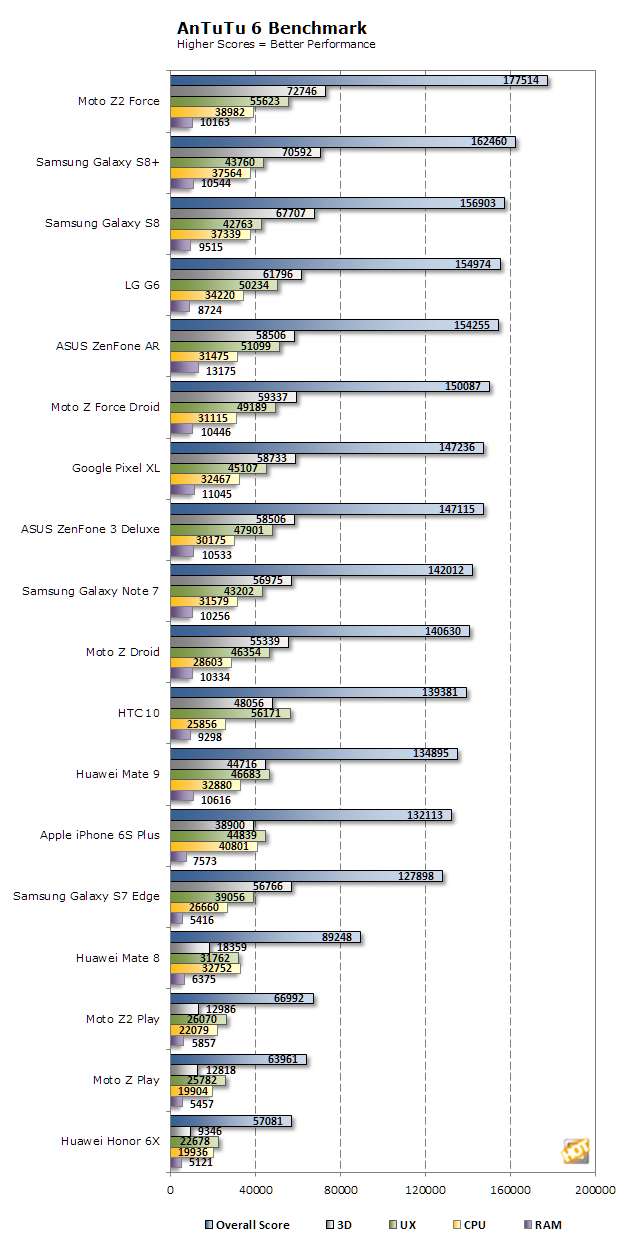Moto Z2 Play Review: A Refined Battery Life Champion Returns
First up is the popular browser performance benchmark, Jetstream. Technically, Jetstream examines JavaScript rendering performance but thanks to JavaScript’s prevalent usage across websites it is a good analogue for overall web browsing.
The Z2 Play score is a minor step back from the original Z Play though still perfectly comparable. Some heavy webpages can be slow to load on both phones, but overall browsing is still snappy. Most users won’t notice an issue unless they are held side by side with a higher-end (processor-wise) flagship phone.
Up next, we have the venerable AnTuTu benchmark. AnTuTu’s latest benchmark returns a number of metrics ranked as scores, rather than frame rates or time to complete. We tested with the latest version of AnTuTu across all platforms including Android, iOS and even Windows Phone. AnTuTu returns four top level performance metric results that we are including here: CPU, RAM, 3D, UX (or User Experience) along with a total score.

AnTuTu reveals precisely what we anticipated, a very modest improvement over the Z Play’s scores. There’s nothing Earth-shattering here, just “good enough” midrange specs for general use.
Moving on, GeekBench taxes only CPU cores in a handset (not graphics), with both single and multi-threaded workloads. It uses a variety of test scenarios to simulate real-world applications in a controlled manner.

Geekbench brings a slight backtrack like we saw with Jetstream. The minor difference could be attributed to thermal throttling or variations in software optimization, but its close enough to say that performance is not really a deciding factor between the Moto Z2 Play and its predecessor.
Finally, we wanted to throw a little gaming performance at it so we ran 3DMark’s Ice Storm Unlimited which is targeted for mobile devices and also runs at 720p in offscreen mode, so as to take display resolution out of the equation.

Performance here is mostly identical to the original Moto Z Play, which is to be expected when both phones have the same Adreno 506 GPU. As before, the Moto Z2 Play is sufficient for casual games but may not be up to the task of handling 3D intensive titles. The physics scores are better care of the faster CPU, but most games that are likely to leverage this advantage are also going to be too graphically intensive for the Z2 Play to handle to begin with.
Overall, performance is not a deciding factor between the Moto Z2 Play and the original Z Play. We would have preferred to see a chip like the Snapdragon 630 employed instead of the 626, which still delivers approximately the same processor performance but is potentially more power efficient for better battery life, has improved 3D performance care of an Adreno 508, and faster image processing important for HDR and panorama stitching. All these comparisons are ultimately speculative of course, so take it with a grain of salt.







